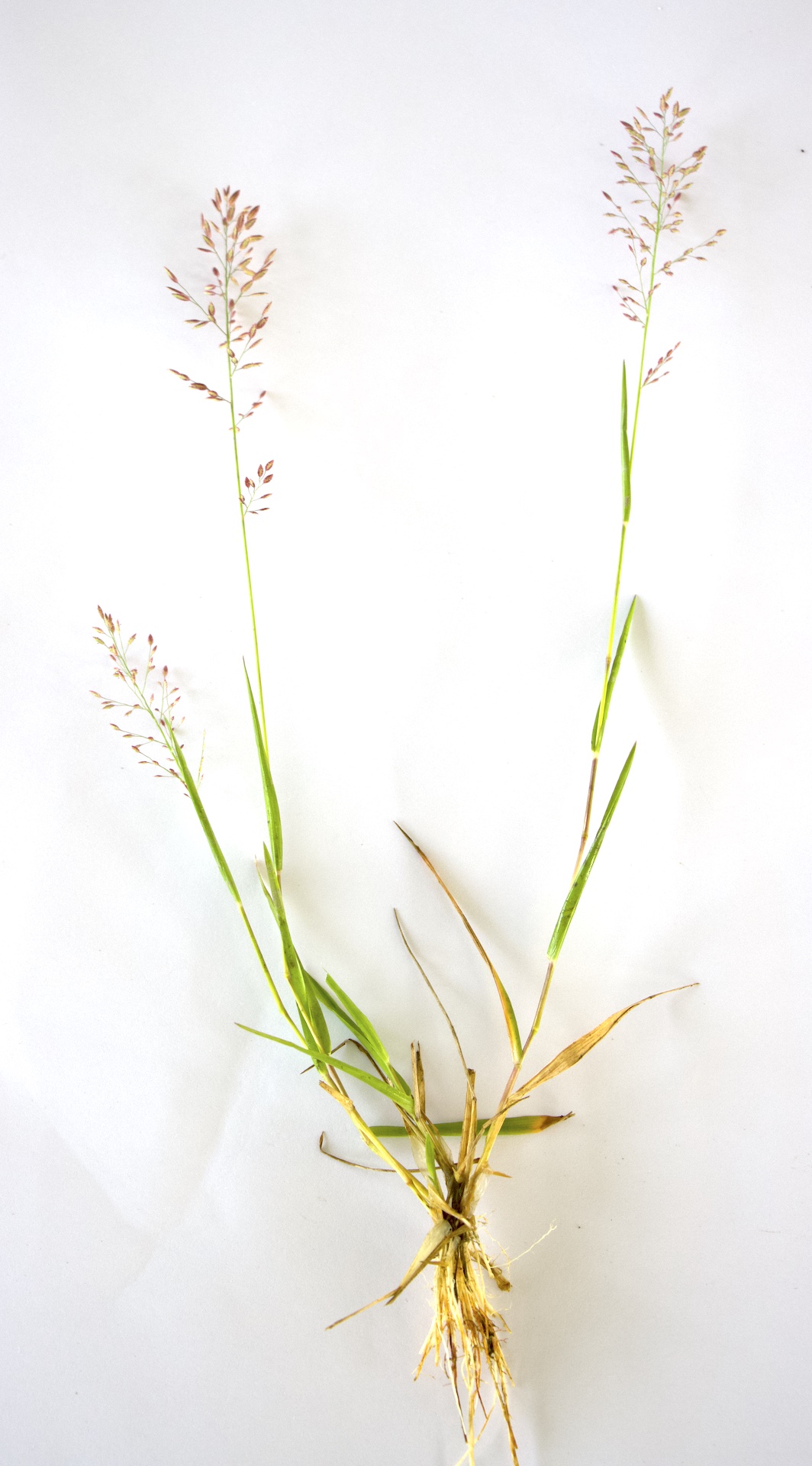

Identification Notes




EPPO CodeERAUN |
Life CycleAnnual, rarely Perennial |
MorphologyCulm- solitary or tufted, slender, often creeping or rooting and branching from the basal nodes, erect to geniculately ascending. Leaves- blade linear to lanceolate, smooth leaf sheath and nodes glabrous, ligule wanting or very short. Inflorescence- an oblong panicle, spikelets 8-20 flowered, pale to purplish green, pedicelled, grainless. Fruit- a caryopsis |
Growing seasonRabi and Kharif |
Germination periodMarch - July |
Flowering periodMay - November |
PropagationBy seed and by basal nodes |
HabitatPrefer moist condition. Mainly found in Aus rice, transplant aman rice and jute fields. Also founds in fallow lands, roadsides and on the levee of crop fields. |
Weed potentialAs one of the alternate hosts of the rice root-knot nematode, E. unioloides provides a means of survival for the different stages of the nematode, helping it to multiply and increase the nematode population in the rice growing areas (Ravindra et al., 2017). |
Control measurePhysical and chemical weeding |
Recommended herbicideButachlor (1 kg/ha), thiobencarb (1.75-2 kg/ha) and pendimethalin (1.75 kg/ha) have been found to control E. unioloides effectively |
DistributionEragrostis unioloides is distributed in temperate Asia, tropical Asia through China to India and southern Asia to Malaysia; northeast Australia and New Caledonia (Clayton et al., 2006; Flora of China Editorial Committee, 2018); it also occurs in the Solomon Islands and Papua New Guinea (Atlas of Living Australia, 2018). It has been introduced in southeast USA, Mesoamerica, the Caribbean, the Pacific Islands (Clayton et al., 2018) and in tropical West Africa (India Biodiversity Portal 2018). |
Medicinal propertiesNo report found. |
References[1] Flora of China Editorial Committee, 2018. Flora of China. In: Flora of China.St. Louis, Missouri and Cambridge, Massachusetts, USA: Missouri Botanical Garden and Harvard University Herbaria. http://www.efloras.org/flora_page.aspx?flora_id=2 [2] Clayton WD, Vorontsova MS, Harman KT, Williamson H, 2006. GrassBase - The Online World Grass Flora. Richmond, UK: Royal Botanic Gardens, Kew. http://www.kew.org/data/grasses-db.htm [3] Atlas of Living Australia, 2018. Atlas of Living Australia. In: Atlas of Living Australia.Canberra, ACT, Australia: GBIF. www.ala.org.au [4] Clayton, WD, Govaerts, R, Harman, KT, Williamson, H, Vorontsova, M, 2018. World Checklist of Poaceae. Richmond, UK: Royal Botanic Gardens, Kew. http://apps.kew.org/wcsp/ [5] India Biodiversity Portal, 2018. Online Portal of India Biodiversity. In: Online Portal of India Biodiversity.http://indiabiodiversity.org/species/list [6] Ravindra, H., Narasimhamurthy, H. B., Sehgal, M., Girijesh, G. K., 2017. Investigation of rice root-knot nematode and weeds interactions in rice agro ecosystem.Journal of Crop and Weed, 13(1) 157-163. http://cwssbckv.org/Journal/default.aspx |